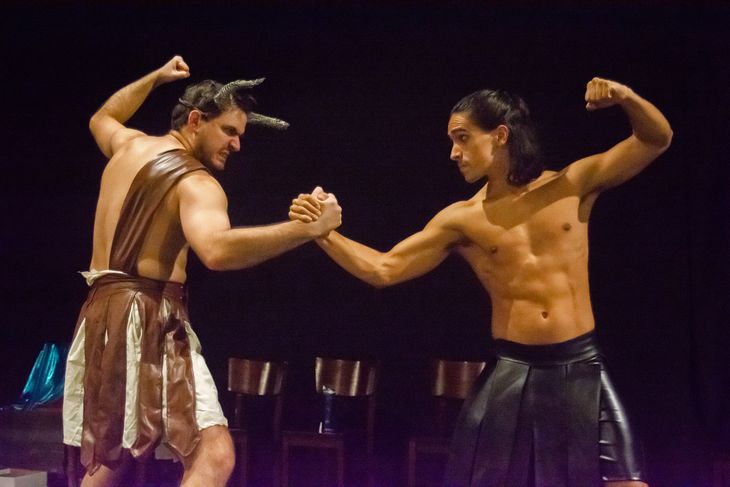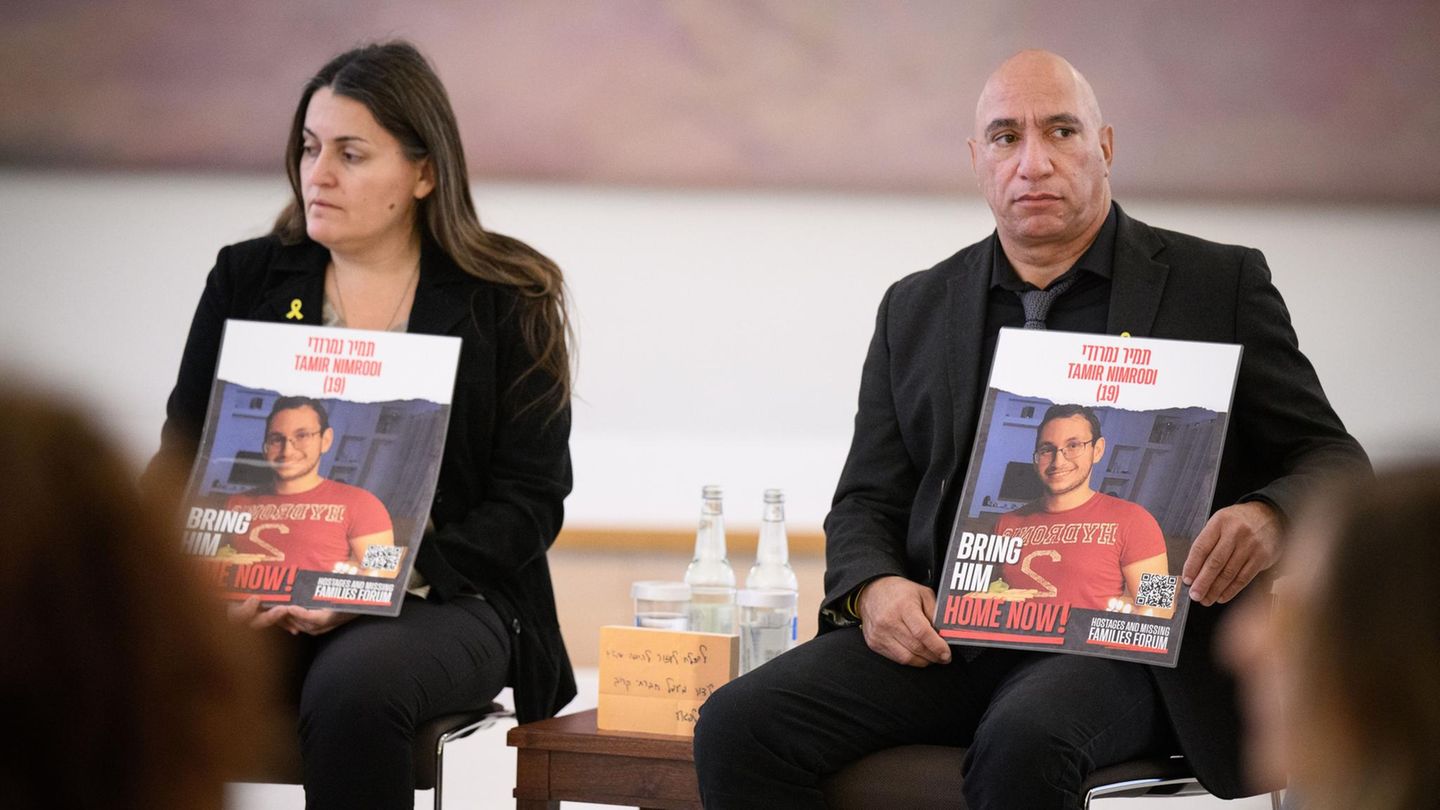In a parody, Buenos Aires and musical tone, it premieres tomorrow “Minoan”, which brings a company of transhumant artists to tell the story between the Minotaur and Theseus, in a context of low budget and dispossession, in tune with the current times. To do this, they use wit and humor on stage, acting synchrony, music and dance, more than visual pyrotechnics.
Created by Pablo Gorlerowith original music by Martin Bianchedi and choreography Veronica Pecollo, the musical is a playful reinterpretation that uses absurdity and clowning to carry the story forward. It has performances of Agustín Iannone, Santiago Leguizamo, Rocío Caldés, Patricia Browne, Damián Iglesias and others. We talk with Brownehistory of the musical that we saw in “Chicago”, “Nine”, “Victor Victoria”, “Cabaret” and “Ciritango”, among other; and Churcheswho worked in “Fiddler on the Roof”, “Dracula” and “Caligula” among many others of Pepe Cibrian.
Journalist: How is this Greek myth approached from the absurdity and the clown?
Damián Iglesias: It tells the famous crack myth of Theseus the hero locked in a labyrinth on the island of Crete. And it is made from the meeting of 9 actors on a stage on Corrientes Street who try to do it through our social and economic reality, with the materials they have at hand, and with humor, which is one of the ways in which artists we face existence.
Patricia Browne: The absurdity of it all is these down-to-earth actors, without work, who were summoned to perform this low-budget work. They are some beginners, overacting and trying to do the best they can. The absurd thing is these actors playing these characters, without effects or fireworks or screens or big costumes. In sneakers.
Agustin Iannone and Santiago Leguizamo in Minoica PH Alen Garcia 2.jpg
Agustín Iannone and Santiago Leguizamo in “Minoica”.
Q: What topics do you address and how are they developed?
PB: The Minoan was a civilization that existed 2000 years BC and believed in certain myths, according to the historian Plutarch. While he is telling the story, he realizes, for example, that there is no money to build a labyrinth and asks the audience to imagine it. It is told from the birth of the Minotaur, son of Queen Pacifa, my character, who fathers this being that according to mythology is monstrous and eats people. But the work shows that this is not the case and the humanity of these characters is addressed. You also see the birth of Theseus, son of Poseidon and Queen Aetra, who I also play. Theseus is very clever, very vain and conceited. Until Theseus and the Minotaur meet.
GAVE: The work addresses the identity of the being, who I am, who they made me believe I am and trying to discern who is who. The monster or the hero, are they really that? The threads that power manages to make the people believe who each character that is narrated in this story is are visible.
Q: How is the setup?
GAVE: It is a simple setup and is put together as the show goes on. It is put together by the actors with the elements found in this cast meeting in the theater. I embody Plutarch, the great Greek philosopher, and I always break the fourth wall with the narration of the work, while I realize that with the few elements we have it is very difficult to tell the story well.
PB: There are no great effects or bombastic costumes but there is a lot of plasticity in the scene, movement, Vero Pecollo’s choreographies are excellent. We were in search of the characters from humor, the ridiculous, not being ashamed, the songs are very fun and very different in their styles. At the end come songs in the style of classic musical comedies.
Q.: It is a different musical, small format, that coexists with large-scale musicals, how do you see the scene?
PB: It is a different musical, there are very few of this style, perhaps “La disgrace”, “Reverso” which, although it is not a musical, has that synchronicity on stage. Buenos Aires has everything, in the independent there are small productions that coexist with the usual musicals like Mamma mia. The public needs theater with humor.
GAVE: Our country is surprising and illogical, but we artists who try to adapt to the situation are not illogical. These great musicals appear even in this unstable economic and cultural situation, and they continue to premiere large and small shows with artists that we need to continue counting on, that is our job. From humor, being able to make a small criticism of what we are experiencing, being able to understand that this is how Argentines are, we continue forward against all odds. Creating and sharing is essential for our lives.
Source: Ambito
I am an author and journalist who has worked in the entertainment industry for over a decade. I currently work as a news editor at a major news website, and my focus is on covering the latest trends in entertainment. I also write occasional pieces for other outlets, and have authored two books about the entertainment industry.




